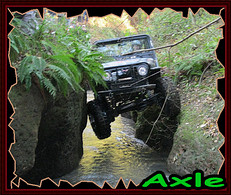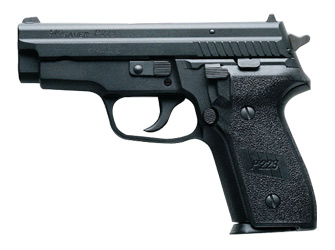Wrangler products have a pretty good set up for dual batteries. Here's a couple of pics of a home built set up. Factory braces and straps and a new tray.


Wrangler Products tray, Hellroaring isolator/combiner, all cables replaced with heavier gauge:

There are a lot of 'Right' ways to do dual batteries.
Depends on your application, so give your application some thought...
1. Just plain old duals, with out external charge isolators.
This is for the guy that wants Duals in temperate conditions.
(The easiest way to do duals)
Here are the 'Rules',
You MUST use to batteries of the same age, size and kind.
If there is an age difference, the newer battery will boil dry before the older one gets fully charged.
If you run two different SIZE batteries next to each other, the smaller one will boil dry before the larger one gets fully charged.
If you run a 'Starting' battery next to a 'Deep Cycle' battery, the Deep Cycle will boil dry before the starting battery gets charged.
*IF* you run the same AGE, SIZE, KIND next to each other, you can connect directly to your alternator and not need a charge isolator.

Since this diagram doesn't allow for dual starter solenoids,
This wouldn't be a good deal for someone in cold weather since a single starter solenoid is fairly restrictive and doesn't allow the doubled amperage to get to the starter.
----------------------------------------------
----------------------------------------------
2. This is an idea for a person that wants to have one battery in reserve.
Wiring this way, you will isolate one battery when the engine stops running, so if you leave lights on, or the kids play in the jeep and turn something on, you can jump start yourself...
This is also a mild weather dual rig, since there is only one starter solenoid.
AND,
Once again, since you aren't using a charge isolator, the batteries will have to be the same Age, Size and Kind.

And this is about the same as this set up if he has an automatic solenoid circuit,

--------------------------------------------------
--------------------------------------------------
3. This is for a person living in cold weather areas, when double the amperage to the starer would really be a good deal!
Again, this is with a single charging source, so the batteries need to be the same Age, Size, and Kind.

This has TWO improvements over the above wiring styles...
1. There is a starter solenoid for EACH battery, so the amperage to the starter is doubled.
2. This uses a smaller Oil Pressure Switch for a charge circuit instead of a large continuous hold solenoid, since there are two starter solenoids, there is no large drain from one battery to another.
With the solenoid this system is self isolating when the engine shuts off.
The Oil pressure switch was designed to run a fuel pump and a choke heater, so the relatively small amperage draw from the second battery is not a big deal.
AND,
By just adding a dash switch, you can self jump start with out ever getting out of the drivers seat in case you ran one battery down...

---------------------------------------------------------
---------------------------------------------------------
This is a little more complicated,
BUT,
Since it's a design for guys that have high output alternators, or use large drains on their batteries (like winches, etc.).
Deep discharge of batteries will require a larger amperage charge to replenish them.
This system is designed to meet three requirements,
1. Trail Redundancy/Availability Of Spare Parts.
There must be two solenoids, two batteries, and they must work seamlessly.
Parts must be readily available at most any auto parts store.
2. It must be able to charge the second battery to the limit of my current alternator.
The alternator is a 78 Amp Delco 10 SI series.
3. It must be self isolating when the engine isn't running,
and self jumping in the even of a single battery getting totally run down or failing.
Looks complicated, but isn't, and was achieved with off the shelf parts except for battery cables...

Here is the same system, but with an oil pressure warning light or buzzer if you need one.
Since it comes with the Oil Pressure switch, why not?...

--------------------------------------------------------
--------------------------------------------------------
If you decide to run different Age, Size, or Kind batteries together,
YOU MUST USE A CHARGE ISOLATOR!
Some people use a starting battery with a deep cycle battery, or have batteries in the back of the jeep for rear mounted winches or power inverters, ect...
Most isolators will allow for up to four batteries, but keep in mind, you are going to loose about 1.5 Volts from alternator output for each battery, so it's recommended you use an alternator with an adjustable regulator, so you can compensate for the losses in the isolator...
Here is a simple diagram of how that would hook up.

----------------------------------------------------------
----------------------------------------------------------
A Cheaper way:
Mud and cheap gauges don't get along, so the expensive part of this is the gauge.
About $15 from Summit.
Liquid filled means no water/mud/sand can get into it like the cheap ones get.
The rest is off the shelf or home made...
Notice in these diagrams an oil pressure switch that isn't 'Stock' for Jeep.
In this case, use one from a Chevy pickup that normally starts the fuel pump, and heats the choke, so it's got plenty of current carrying capacity.
It also has the ground switch for your oil pressure 'Idiot' light.

The high pressure oil pressure 'Whip' is from a grease gun.

4,500 PSI capable, designed for petroleum, with the correct pipe thread ends for $5 at NAPA. (having one custom made is about $30!)
That gets the oil pressure up from the side of the engine to a more reasonable location...
Distribution/Manifold Block...
Scrap aluminum about 1" thick. Drill, $6 pipe tap and cutting oil.
Notice there is a version for electric gauge sending units so they can hang over the fender?
You will need a pipe plug for the gallery end with that version!


If you aren't using an electric gauge, then it's time for a reasonable line to the mechanical gauge... $8 with lots of fittings from Advance Auto.

Now you can reach/service all your electrical without burning yourself on the headers!
------------------------------------------
------------------------------------------
The oil pressure switch was originally to turn off the fuel pump in an accident where the engine died.
You don't want fuel pumping into a vehicle after a crash, so if the engine stopped, and the oil pressure drops, it opens the circuit.
It is used to isolate the second battery when the engine shuts off.
Both batteries are tied together to charge/discharge when the oil pressure is up (Engine running),
BUT,
When you shut the engine off, or the engine dies, oil pressure drops and the second battery doesn't discharge.
..............................
*IF* your primary battery isn't discharged,
When you hit the key switch, both solenoids will send CRANKING amperage to your starter.
When the vehicle starts, and the oil pressure comes up, the oil pressure switch will connect both batteries so the can both charge.
...............................
*IF* Your primary battery is DISCHARGED, (Left the dome light on or something else on in the vehicle) you can self jump start by using the dash switch listed in diagram 4.
Since it's a 'Momentary' switch, you can't 'Leave it on accidentally' and run both batteries down.
(Idiot Proof)
This is handy if you use radios at your camp site, have kids that get into things, have equipment that likes to slow drain things...
The idea of the momentary is to supply power to the fuse box and starter switch even with a dead primary battery.
You are just jumping some power over to the fuse box power feeds so you can get the starter solenoids activated, and they, and the oil pressure switch will take it form there for you!
..................................
*IF*
You have problems getting started pretty often, have a winch, or are going to discharge the batteries deeply with an inverter, welder, or some other device...
The 5th diagram is really the best way to do this if you think you are going to have problems or deeply discharge the batteries...
A heavy duty lighting/accessory relay, still automotive size, since you only need about half of your alternator maximum output, which is usually about 30 or so amps...
Most light relays at the discount stores are rated for 25 or 30 amps, and you are not going to see that maximum charge very often...
Is triggered by the oil pressure switch OR by a dash switch to connect the two batteries via a 10 Gauge wire in the diagram.
----------------------------------------
----------------------------------------
It is recommend you use WELDING CABLE for battery cable! Much more suited to large volume DC loading than thicker strand, vinyl insulated, and smaller sized 'Battery Cables' sold at the discount stores!
And don't forget to move the primary battery ground down to a starter bolt!
This will help your starter get the current it so desperately needs, especially when it's cold and all those metal parts the ground has to jump through have contracted from the cold!
--------------------------------------
--------------------------------------
Statement:
I you are going to go with that last diagram with the oil pressure switch controlling a solenoid, use a relatively inexpensive automotive relay that is designed for continuous use, and designed for the amperages it will be exposed to.
The 'Isolator/Combiner' switches and after market solenoids are VERY expensive, and if one part goes out, you are screwed and have to replace the entire thing at great cost, or wait on warranty that is usually slow as all get out.
Use parts 'Off The Shelf' and easy to get/replace,
And if some part fails, you change only that part.
Ask any auto parts store and say, "I want a ford starter solenoid", or "I want a driving light relay", or "I want an oil pressure switch for..." and for $10 you have your part on the spot...
With the expensive solenoid systems, if the transfer solenoid fails, you are up 'The Creek' for self rescue.
With this set up, if either solenoid fails, you won't know the difference until you do maintenance...
Then it's a $10 fix.
.........................
When you hit the key, BOTH starter solenoids send juice to the starter.
If one battery or solenoid is faltering, the other will do the job just like a factory system.
You wont even know one has failed with out testing...
The second battery solenoid is there to double your amperage to the starter.
Since most of the time the biggest restriction is at the solenoid, a second starter solenoid will double the effective amperage to the starter on cold days,
And provides integrated redundancy in the event of a solenoid or battery failure.
Oil pressure switch is there to trigger the isolation between batteries when the engine is 'Off' or stalls.
When the oil pressure comes up, the oil pressure switch connects BOTH batteries to each other via the relay, so they both charge/discharge at the same rate with vehicle draws.
The common automotive relay is in the circuit to make sure the second battery gets charged when the engine is running and the oil pressure is up.
Again, this is seamless, and requires NO action from the operator, so you don't have to worry about forgetting to flip a switch, or complicated explanations if someone else drives your jeep...
Since only the PRIMARY battery NORMALLY supplies current to the ignition switch, if you run one battery COMPLETELY DEAD so the primary battery can't power/activate the ignition switch...
Then the 'Rescue' switch on the dash can be activated to make the second ISOLATED battery power the system long enough to get things started!
Simple but elegant!
By running the 'Rescue' switch through the relay, instead of just jumping the oil pressure switch, there are no LIVE wires strung through your jeep for this rescue system!
(A big plus if you drive off road a lot where wires get rubbed through or melted through in odd places pretty often!)
You CAN jump the oil pressure switch instead of using a relay, but that will be a 'Hot' line into the cockpit.
Doing things this way also means there is no 'Maintenance Load' on the batteries while the jeep is just sitting.
Lots of the 'Isolation/Combiner' and 'Charge Isolators' have 'Maintenance Loads' or 'Phantom Loads' where current is leaking through switches or circuitry.
This is very much like my ignition upgrades, stock parts used to YOUR benefit, instead of expensive, complicated, aftermarket parts that take weeks or months to get warrantied if something goes wrong (if there even IS a warranty...)
Note:
You should always go at least TWO wires sizes smaller on a Fusible link than the wire you are protecting.
The idea being the fusible link be the WEAKEST link in the circuit.
I recommend you go FOUR WIRE SIZES SMALLER than the wire you are protecting.
IE:
10 Ga. wire, use a 14 Ga. fusible link.
12 Ga. wire, use a 16 Ga. fusible link.
14 Ga. wire, use a 18 Ga. fusible link.
Ect...
Once installed with a little heat shrink tubing to protect the connections, Fusible links don't need any maintenance, they are impervious to the elements.
Dual battery set up in the Netherlands: http://img514.images.../dualbatjy0.jpg
Thanks to yelocj & jeephammer for their excellent contribution.

 Help
Help










